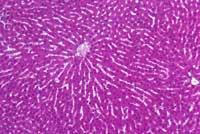Explain the new way to introduce proteins into cells
2001/03/13 Galarraga Aiestaran, Ana - Elhuyar Zientzia
Proteins are cell workers, as they perform many functions; therefore it is very important for researchers to introduce proteins into the cell and analyze what happens. But until now, protein introduction techniques were not very effective and researchers obtained worse results than desired, especially because many cells died. Now, however, the journal The Proceedings of the National Academy of Sciences has announced an effective way to introduce proteins and survive cells.

In fact, few methods were known for hydrophilic proteins to obtain a hydrophobic cell membrane. One of these methods is to associate proteins with special peptides produced by bacteria, viruses or flies. Being these peptides attractive to the cell, it ingests them together with protein, that is, peptide plus protein. However, sometimes the protein is distorted before it is introduced, so when it is inside the cell it cannot perform its function.
Another method used is the perforation of the cell membrane by bacterial toxins. Proteins enter these corridors, but the cell survives very little by having the perforated membrane.
According to researchers at the University of Mainz in Germany, the key is to know what dose of toxin is needed. They have worked with the protein streptococcus piogenes streptolisina-O. Human leukemia cells detected a dye dose of 80%. An hour after the cell had a toxin-free zone, 50% of the cells did not accept any other dyeing, indicating the disappearance of the holes. In addition, the cells survived. In later research, using the same dose of toxin, they managed to introduce three proteins that were able to fulfill their intracellular function.
This new technique will allow analyzing, among other aspects, the cellular movement and the physiological changes that occur by the contact between them.

Gai honi buruzko eduki gehiago
Elhuyarrek garatutako teknologia






